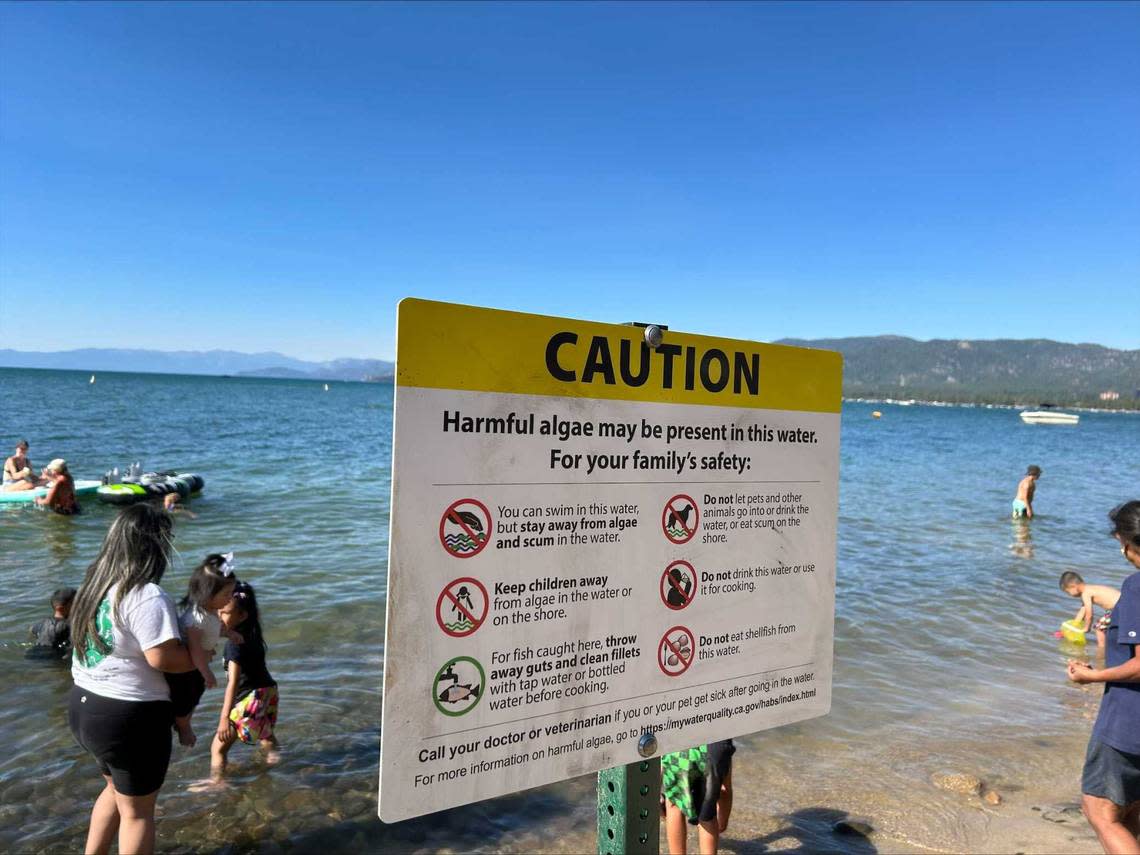Lake Tahoe beaches tested for toxic blue-green algae bloom. Here’s how to spot it

Authorities are testing after reports surfaced of toxic blue-green algae blooms at two Lake Tahoe beaches.
The investigation began shortly after a woman posted a video on TikTok where she claimed her dog died from algae poisoning after swimming at El Dorado Beach and Nevada Beach, two popular spots on the south shore.
On Monday, caution signs at El Dorado Beach in South Lake Tahoe warned visitors that the harmful blue-green algae, also known as cyanobacteria, could be present in the water. It urged swimmers to stay away from any algae and not drink water or eat shellfish from this part of the lake. Officials also advised children and animals to be kept away from any algae scum.
“Tahoe is really clean and clear and fun to recreate in. But watch for signs, go online. Be aware.” said Jeff Cowen, the spokesman for the Tahoe Regional Planning Agency. “There are generally not going to be health concerns in the Lake Tahoe Basin ... but watch out for children and pets. Smaller body sizes cannot resist certain inputs of blue-green algae.”
So far, water quality officials have collected samples and conducted visual inspections for blue-green algae at El Dorado Beach. Sample results should be released by Friday, according to the planning agency.
The water at Nevada Beach, which is near Zephyr Cove on the Nevada side of the lake, was also tested for blue-green algae by the Nevada Division of Environmental Protection. Those results are also expected Friday.
How to identify harmful blue-green algae
Blue-green algae is a natural part of Lake Tahoe’s ecosystem, but it can become harmful when it blooms in a high enough concentration. When consumed, the bacteria can cause skin rashes, headaches, flu symptoms and sinus irritation.
Here are some signs that cyanobacteria is present in a body of water:
▪ Small blue-green, white or brown particles are floating in the water;
▪ The water is streaked with algae that looks like spilled paint;
▪ Scum or foam is resting at the surface of the water or along the shoreline;
▪ The water has an odor that smells fishy or like gasoline.
Northern California has experienced more frequent harmful algae blooms as the region undergoes extended droughts and drier, hotter summers. Shallow water levels and warm weather help the dangerous algae to rapidly grow.
Visitors at other Lake Tahoe beaches have already been urged to use caution when recreating. On June 15, the U.S Forest Service posted on X that slow-moving bodies of water at Kiva Beach and Taylor Creek could lead to toxic algae growth and illness.
“Be aware of water quality, associated risks before allowing pets to drink/swim in affected waters,” the post warned.


